 PARIS=Recent massive volcanoes have risen from the ocean floor deep under the Arctic ice cap, spewing plumes of fragmented magma into the sea, scientists who filmed the aftermath reported Wednesday.The eruptions-as big as the one that buried Pompei-took place in 1999 along the Gakkel Ridge, an underwater mountain chain snaking 1,800 kilometres (1,100 miles) from the northern tip of Greenland to Siberia.Scientists suspected even at the time that a simultaneous series of earthquakes were linked to these volcanic spasms.But when a team led of scientists led by Robert Sohn of the Woods Hole Oceanographic Institution in Massachusetts finally got a first-ever glimpse of the ocean floor 4,000 meters (13,000 feet) beneath the Arctic pack ice, they were astonished.What they saw was unmistakable evidence of explosive eruptions rather than the gradual secretion of lava bubbling up from Earth's mantle onto the ocean floor.Previous research had concluded that this kind of so-called pyroclastic eruption could not happen at such depths due to the crushing pressure of the water."On land, explosive volcanic eruptions are nothing exceptional, although they present a major threat," said Vera Schlindwein, a geologist with Germany's Alfred Wegener Institute for Sea and Polar Research, which took part in the study.But the new findings, published in Nature, showed that "large-scale pyroclastic activity is possible along even the deepest portions of the global mid-ocean ridge volcanic system."The mid-ocean ridge runs 84,000 kilometres (52,000 miles) beneath all the world's major seas except the Southern Ocean, and marks the boundary between many of the tectonic plates that make up the surface of the Earth.When continental plates collide into each other, they can thrust up mountain ranges such as the Himalayas.But along most of the mid-ocean ridge-including the Gakkal Ridge-the plates are pulling apart, allowing molten magna and gases trapped beneath the crust to escape.Sohn and his colleagues gathered their data in July last year aboard the ice breaker Oden, using state-of-the-art instruments including a mutlibeam echo sounder, two autonomous underwater vehicles and a sub-ice camera designed for the mission.Both sonar and visual images showed an ocean valley filled with flat-topped volcanos up to two kilometres (1.2 miles) wide and several hundred metres high.
PARIS=Recent massive volcanoes have risen from the ocean floor deep under the Arctic ice cap, spewing plumes of fragmented magma into the sea, scientists who filmed the aftermath reported Wednesday.The eruptions-as big as the one that buried Pompei-took place in 1999 along the Gakkel Ridge, an underwater mountain chain snaking 1,800 kilometres (1,100 miles) from the northern tip of Greenland to Siberia.Scientists suspected even at the time that a simultaneous series of earthquakes were linked to these volcanic spasms.But when a team led of scientists led by Robert Sohn of the Woods Hole Oceanographic Institution in Massachusetts finally got a first-ever glimpse of the ocean floor 4,000 meters (13,000 feet) beneath the Arctic pack ice, they were astonished.What they saw was unmistakable evidence of explosive eruptions rather than the gradual secretion of lava bubbling up from Earth's mantle onto the ocean floor.Previous research had concluded that this kind of so-called pyroclastic eruption could not happen at such depths due to the crushing pressure of the water."On land, explosive volcanic eruptions are nothing exceptional, although they present a major threat," said Vera Schlindwein, a geologist with Germany's Alfred Wegener Institute for Sea and Polar Research, which took part in the study.But the new findings, published in Nature, showed that "large-scale pyroclastic activity is possible along even the deepest portions of the global mid-ocean ridge volcanic system."The mid-ocean ridge runs 84,000 kilometres (52,000 miles) beneath all the world's major seas except the Southern Ocean, and marks the boundary between many of the tectonic plates that make up the surface of the Earth.When continental plates collide into each other, they can thrust up mountain ranges such as the Himalayas.But along most of the mid-ocean ridge-including the Gakkal Ridge-the plates are pulling apart, allowing molten magna and gases trapped beneath the crust to escape.Sohn and his colleagues gathered their data in July last year aboard the ice breaker Oden, using state-of-the-art instruments including a mutlibeam echo sounder, two autonomous underwater vehicles and a sub-ice camera designed for the mission.Both sonar and visual images showed an ocean valley filled with flat-topped volcanos up to two kilometres (1.2 miles) wide and several hundred metres high.http://news.yahoo.com/s/afp/20080625/sc_afp/sciencegeologyoceansvolcano;_ylt=Av6XoFlrFDxfQbiwcRGOdB4DW7oF
As in the days of Noah....

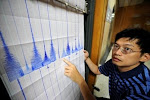
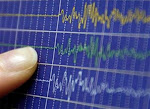
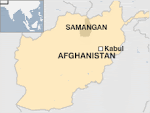







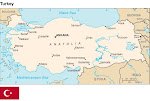
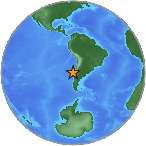




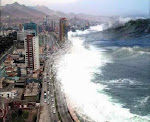

.jpg)


.bmp)
No comments:
Post a Comment